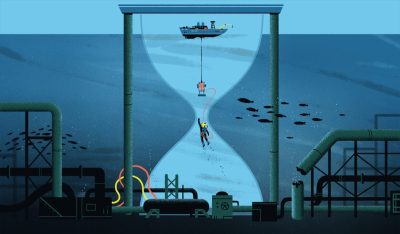
Let's find why it is one of the most dangerous jobs on Earth.
It is a method of deep sea diving in which the divers spend long periods of time in a special pressurised saturation chamber, which may be installed on a ship, ocean platform or under water. Saturation divers work at extreme depths of 200-300 metres or more below sea level (in contrast, scuba divers dive to a depth of 50 metres)
A saturation diver lives in the saturation chamber for the duration of his project. Up to 12 divers live in close proximity in the chamber. In the chamber, the pressure is built up to match the pressure that the diver has to face in his working environment on the seabed The pressure at a depth of 300 metres under water is about 440 psi (pounds per square inch).
As the surrounding pressure on the diver’s body increases, he breathes in a mixture of oxygen and other inert gases like helium. The longer he stays in that pressurised environment, the more the inert gases dissolve in his body and saturate the divers blood and tissues. A diver can withstand the increased environmental pressure for a prolonged time.
To get to the sea floor, the diver exits the pressure chamber habitat through an airlock and enters a diving bell, which is lowered into the sea. After the diver completes his task, he gets back to the surface in the diving bell and re-enters the saturation chamber. Saturation divers usually have a work period of about 28 days after which, they have to compulsorily take a month off before going back to work.
Before the diver leaves the saturation chamber at the end of his work period, he has to undergo a long decompression to avoid 'the bends. technically known as decompression sickness. It is a condition which affects divers who ascend too quickly to the surface, leading to the harmful formation of gas bubbles in the blood and tissues. Saturation diving limits the number of decompressions, thereby significantly reducing the chances of decompression sickness.
Saturation divers are mainly used by the oil and gas industry or for research. They install pipelines, fix heavy machinery, build underwater structures, etc. on the seabed. Saturation diving is one of the most dangerous jobs on earth.
Picture Credit : Google

